Birthplace of Mitarashi Dango: Kamo Mitarashi Chaya
One of the most popular traditional Japanese sweets out there is mitarashi dango. These chewy rice cakes covered in a sweet and salty soy sauce based sauce are so popular throughout Japan that you can easily find them in many Japanese supermarkets. From the young to the old, it is hard to find anyone who doesn’t like them.
The History of Mitarashi Dango
While today you can find mitarashi dango all over the country, the treat originated in a small shop just in front of Shimogamo Shrine in Kyoto. Actually the very name, mitarashi, comes from Mitarashi Pond in Shimiogamo Shrine, where the saio [際王], the main figure of the Aoi Festival, purifies themselves. The bubbles of the spring water in Mitarashi Pond inspired the round shape of the dango.
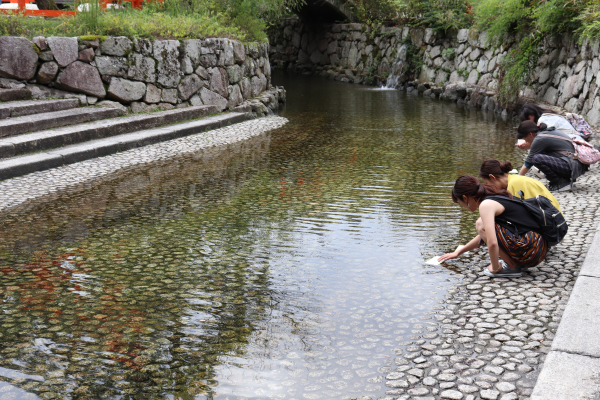
Kamo Mitarashi Chaya
Kamo Mitarashi Chaya is just across from Shimogamo Shine (near the Shimogamo Shine bus stop) and has been open since 1922. It may come as a surprise then that 100 years haven’t even passed since mitarashi dango was invented!
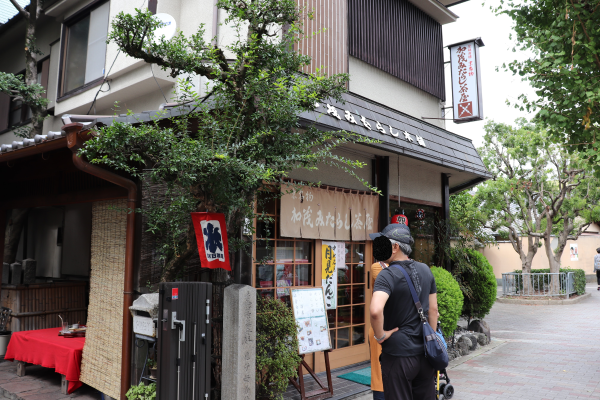
Three sticks of dango and tea is 420 yen.

Typically, dango come three to four balls per stick, but at Kamo Mitarashi Chaya they serve them five to a stick. Moreover, the 4th and 5th dango are always separated. The reason why they separate these dango is uncertain. Some say it is because Emperor Go-daigo saw five bubbles, four bubbles in a group and then one separately, in Mitarashi Pond when he visited Shimogamo Shrine. Others say the dango represents human body.
I am not sure which is true but, I guess the only thing that matters is that they are very tasty indeed.
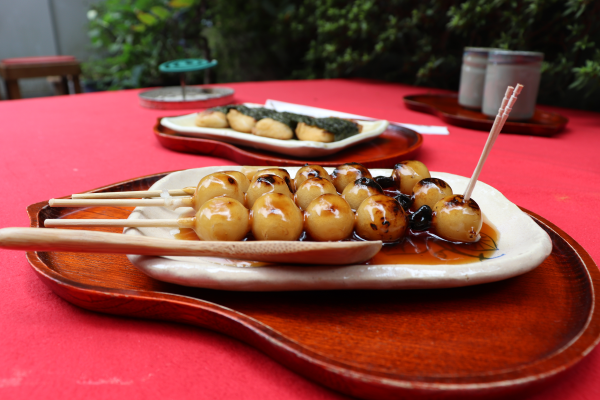
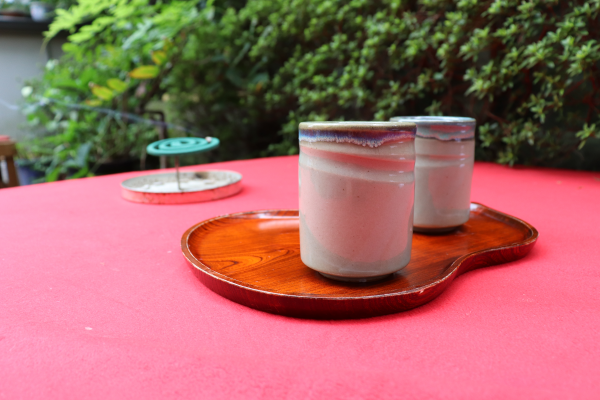
The sauce on the dango is very smooth and lightly flavored. Before you know it, you can easily gobble up one serving. The sauce is a very simple combination of sugar and soy sauce that complement each other nicely. Being simple but tasty is very common concept in Japanese food, I think.
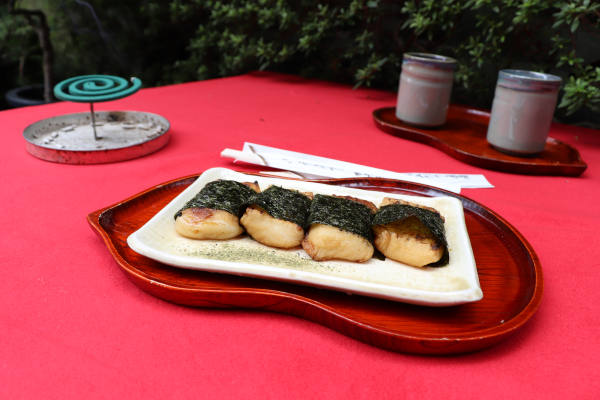
If you don’t want to wait you can get your order to-go, but you have to order five sticks of dango or more.
Mitarashi dango are a refreshing snack and are certainly a personal favorite. If you ever happen to find yourself near Shimogamo Shrine, I highly recommend giving these dango a try!

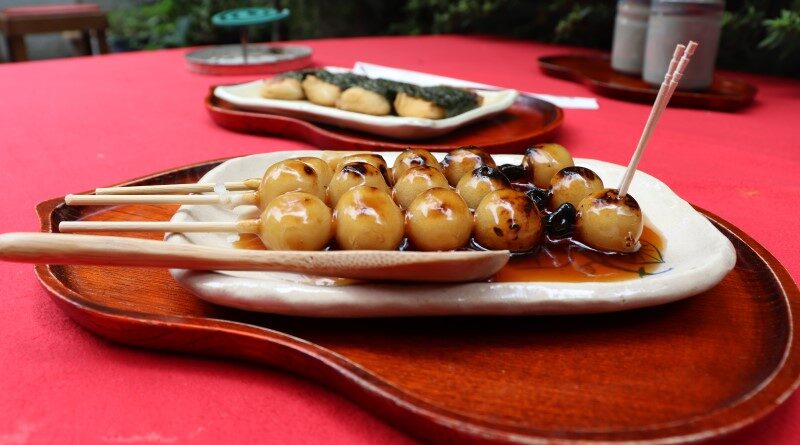
Leave a Reply